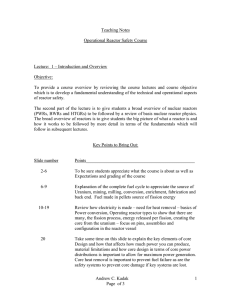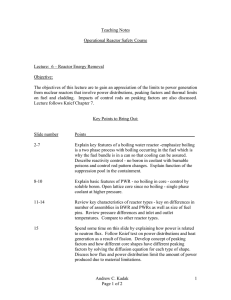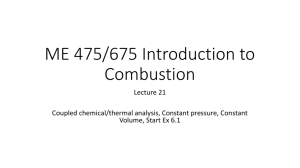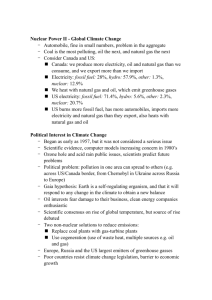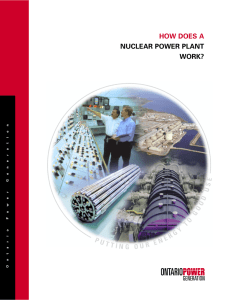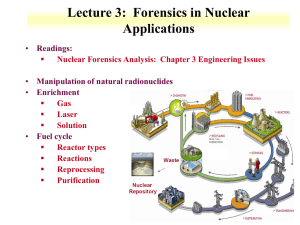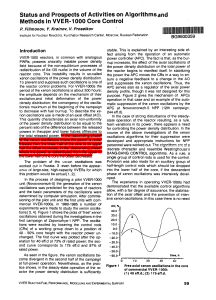Document 13444000
advertisement
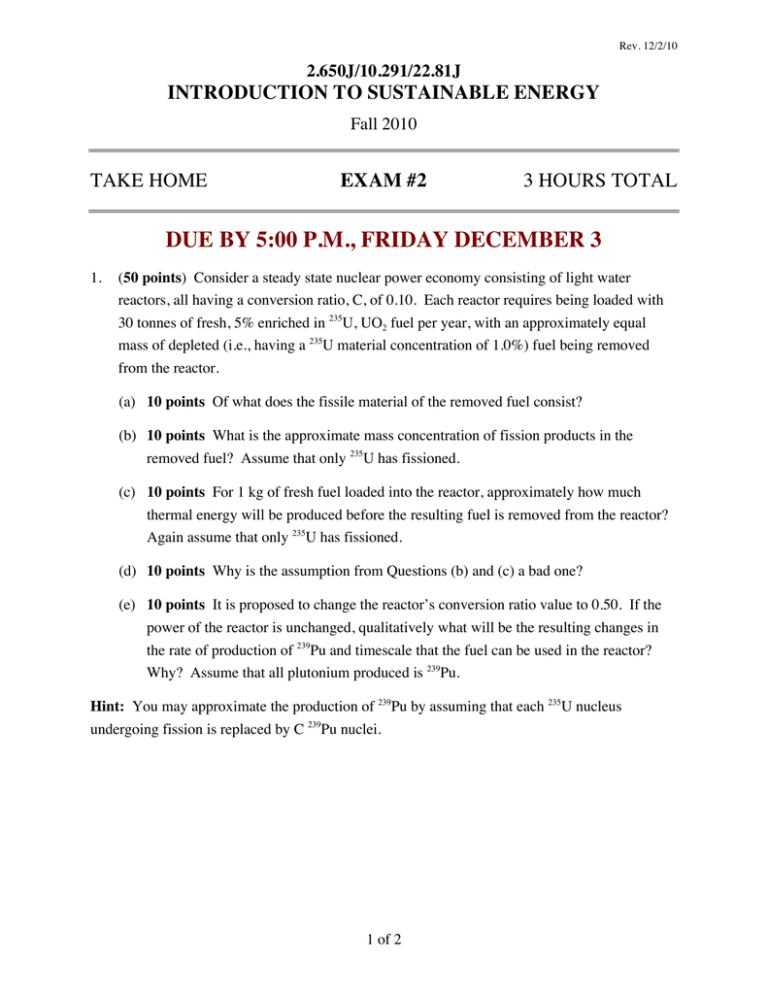
Rev. 12/2/10 2.650J/10.291/22.81J INTRODUCTION TO SUSTAINABLE ENERGY Fall 2010 TAKE HOME EXAM #2 3 HOURS TOTAL DUE BY 5:00 P.M., FRIDAY DECEMBER 3 1. (50 points) Consider a steady state nuclear power economy consisting of light water reactors, all having a conversion ratio, C, of 0.10. Each reactor requires being loaded with 30 tonnes of fresh, 5% enriched in 235U, UO2 fuel per year, with an approximately equal mass of depleted (i.e., having a 235U material concentration of 1.0%) fuel being removed from the reactor. (a) 10 points Of what does the fissile material of the removed fuel consist? (b) 10 points What is the approximate mass concentration of fission products in the removed fuel? Assume that only 235U has fissioned. (c) 10 points For 1 kg of fresh fuel loaded into the reactor, approximately how much thermal energy will be produced before the resulting fuel is removed from the reactor? Again assume that only 235U has fissioned. (d) 10 points Why is the assumption from Questions (b) and (c) a bad one? (e) 10 points It is proposed to change the reactor’s conversion ratio value to 0.50. If the power of the reactor is unchanged, qualitatively what will be the resulting changes in the rate of production of 239Pu and timescale that the fuel can be used in the reactor? Why? Assume that all plutonium produced is 239Pu. Hint: You may approximate the production of 239Pu by assuming that each 235U nucleus undergoing fission is replaced by C 239Pu nuclei. 1 of 2 Sustainable Energy Exam #2 Page 2 2. (50 points) In San Francisco, California, state and city tax credits are such that ≤10 kWe of solar photovoltaic capacity can be installed in a residential home at no cost to the homeowner. The electricity produced can be sold into the California ISO at a price of 6x the cost of producing coal-based electricity. What are the costs and benefits of this policy? (i.e., list the factors that should be taken into account in such an evaluation.) Among those affected by this policy are homeowners, taxpayers, solar technology manufacturers, installers and maintenance firms, electricity consumers, future Californians, Navadians and Oregonians, consumers of electricity, persons exposed to health harm from burning of coal, and persons who could be benefitted by other uses of the funds devoted to such installations. For each such group, indicate the costs and benefits of this policy. EXTRA CREDIT, 5 POINTS: Assuming that all of the costs and benefits of the policy mentioned in Problem 2 could be quantified, show how you would use such results to decide whether to continue the policy. MIT OpenCourseWare http://ocw.mit.edu 22.081J / 2.650J / 10.291J / 1.818J / 2.65J / 10.391J / 11.371J / 22.811J / ESD.166J Introduction to Sustainable Energy Fall 2010 For information about citing these materials or our Terms of Use, visit: http://ocw.mit.edu/terms.



